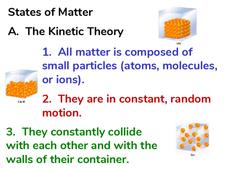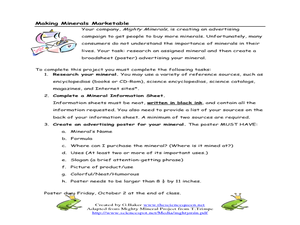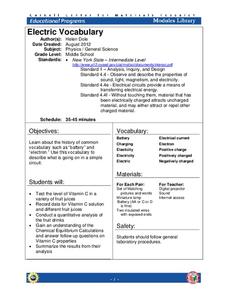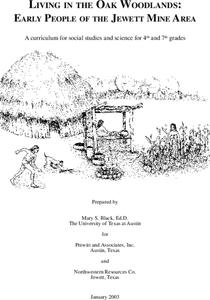University of California
Plankton
Plankton: so much more than just a SpongeBob character. Three different activities have kids looking at both phytoplankton and zooplankton in pictures, as well as collecting their own samples (depending on your access to a saltwater...
Curated OER
Bone Transformations
Students create a picture from the shape of a bone. In this life science and art activity, students discuss their bones and their purposes, then use a picture of a bone as a starting point for an artistic transformation. Lesson can be...
Curated OER
Fire Extinguishers-Word Search
In this fire extinguisher word search worksheet, students find a total of 14 related words after reading a short passage about fire extinguishers. Students then color a picture the correct colors, based on a picture they find of an...
Curated OER
LLoyd's Corner
Students write a description of how a local environment has changed over time and why these changes have occurred accordingly. They describe and record changes in Lloyd's corner over time as depicted in pictures taken at four different...
Curated OER
TE Lesson: Caught in the Net
Students student the concept of bycatch, the act of unintentionally catching certain living creatures using fishing equipment. They determine the difference between bycatch and target creatures. They discover what species become bycatch...
Curated OER
Living in the Oak Woodlands: Early People of the Jewett Mine Area
Students are introduced to the early peoples living in the Jewett Mine area. After viewing transparencies, they view pictures of the mine today and its main area of production. For each picture, they develop symbols and captions about...
Curated OER
States of Matter
This particle PowerPoint includes many pictures to illustrate solids, liquids and gasses and the behavior of their particles.
Curated OER
Periodic Table Basics Test
The periodic table of elements is a vital tool for all chemistry apprentices and professionals alike. Here is a chance for your beginning chemists to assess their understanding of the periodic table. They list element names, symbols,...
Arts & Humanities
Make Your Own Flower Garden
Get into art with a little instructional activity on flower parts. The class reviews basic information regarding flowers and then they use a paper mosaic technique to create visual representations of the lovely plants.
Curated OER
Tracking Satellites Using Latitude and Longitude
Students, viewing an Internet site, plot the path of several satellites using latitude and longitude over the course of an hour. They learn the four basic types of satellites and their purpose.
Curated OER
Periodic Table Basics Make-Up Test
In this periodic table worksheet, students complete a table of elements with their atomic number, atomic mass and symbol. They classify elements by their group name and distinguish between metals, nonmetals, and semi-metals. They also...
Curated OER
Making Minerals Marketable Data Sheet
For this minerals worksheet, students investigate a mineral by doing research, they complete a mineral information sheet and they develop an advertising poster for the mineral.
Curated OER
Mapping Constellations
Students become familiar with constellations. In this space science lesson, the teacher introduces constellations by showing students the star patterns and reading myths. Students, observe the stars nightly, then choose one constellation...
Curated OER
Metric Mania-Mass
In this metric system worksheet, students convert from the English system of measurement for mass to the metric system of measurement. They also convert measurements of mass within the metric system and explain how to measure an object...
Curated OER
The Earth, Sun Mood and Stars Unit (Planets too!)
Fifth graders prepare five activities to do then show their energy saving skills. In this investigative lesson students create five projects then participate in an energy saving demonstration.
Curated OER
Fulcrums in Our Body
Second graders discuss fulcrums and levers and identify at least two fulcrums and levers on their bodies. They also identify fulcrums and levers on animal bodies.
Curated OER
MAKING THREE DIMENSIONAL PLANT AND ANIMAL CELLS
Young scholars create two different cells, one plant and one animal. In this plant and animal cell instructional activity students form groups and construct a part of a cell. Young scholars then put them all together to form one...
Curated OER
Human VS Animal Skeletons
Students research and compare human and animal skeletons. They identify human skeletons basic functions and parts.
Cornell University
Electric Vocabulary
Practice electric vocabulary using multiple methods. Learners begin by watching a video that explains vocabulary related to electric currents. They match vocabulary cards to practice and then create an electric circuit. Using the...
Curated OER
Skateboard Science
Students investigate how skaters can turn in midair. In this physics lesson, students relate Newton's Laws to skateboarding. They carry out the maneuver with the help of their classmate.
Curated OER
Living in the Oak Woodlands: Early People of the Jewett Mine Area
Students examine the archeology and native peoples of the Jewett Mine area of Texas. Using a map, they explain the economic patterns of the native groups and how the geography of the area affected activities. They compare and contrast...
Curated OER
Animal Tracks
Second graders study the different tracks that animals make. They identify similarities and differences in the tracks and formulate opinions based on facts.
Curated OER
The Circulatory System
Students explore the circulatory system of animals. Using the Internet, students research animals without circulatory systems. They identify the three types of blood vessels and describe the flow of blood through the heart. Finally,...






















